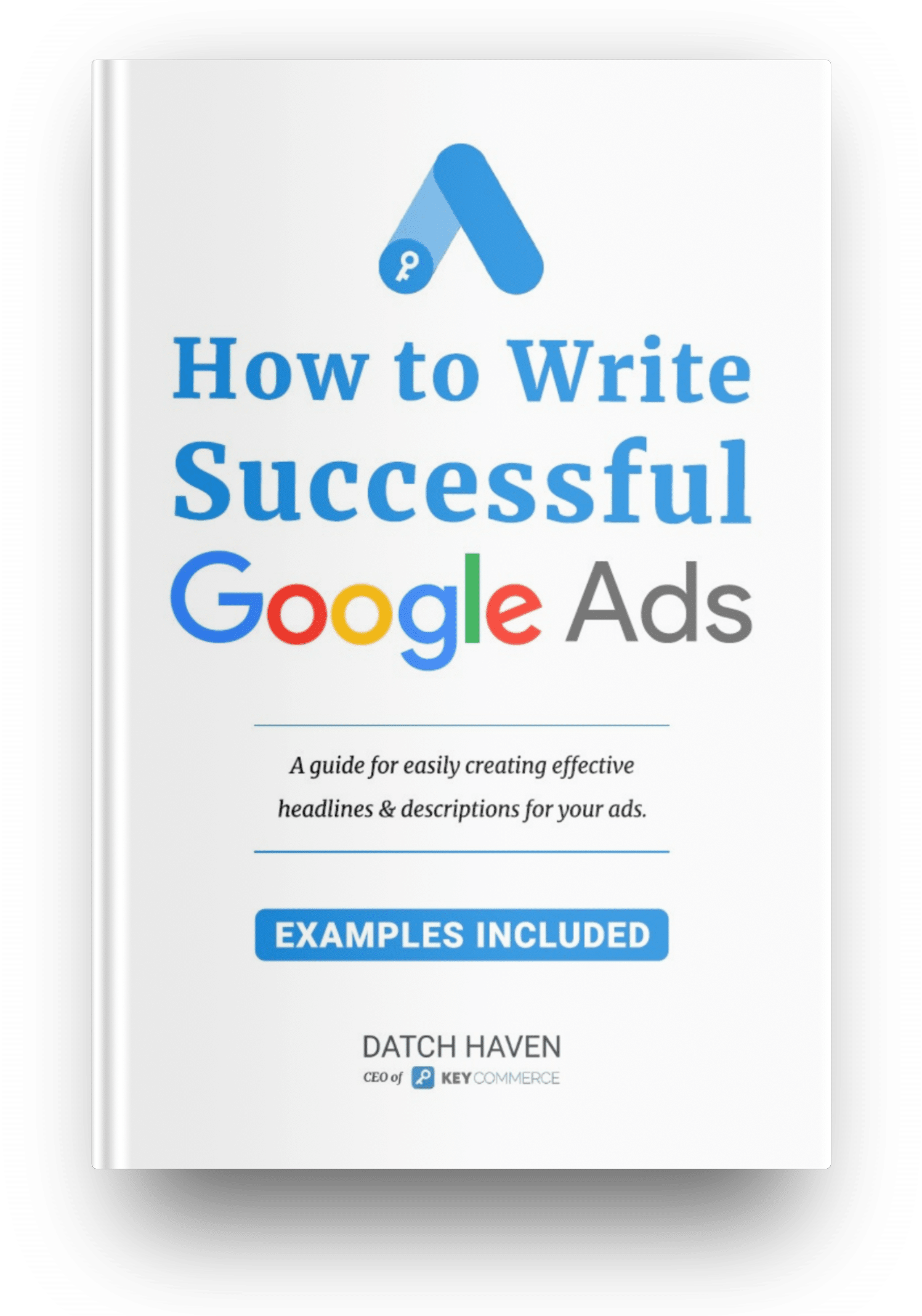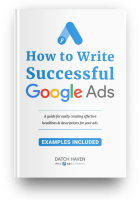But to avoid detrimental errors, you can learn from the mistakes that other marketers have made, and that's what this part of our Google Shopping campaigns guide is going to be focusing on. The fact is, a lot of mistakes can be avoided if you know what to look out for.
Noticing mistakes early on can be the difference between losing thousands and losing a few hundred, or it could even mean you pull back a failing campaign that a simple error was dragging down. But the best feeling of all is catching a mistake straight away, and you can do this if you know what the top mistakes that we see ecommerce marketers making are.
Keep all of these mistakes in mind because they could literally help you to save a lot of money and have a decent conversion rate.
1. Mismanaging Their Bids
Knowing how to manage your bids is crucial and is often the reason why ecommerce businesses find themselves turning to an agency for help. If you don't manage your bids properly and disregard good practices, your budget will be drained and ad performance will slack.
It's also worth mentioning that learning how to place bids on your Google Shopping campaign isn't something you'll learn overnight. It's a skill that will take you months of learning to understand before you have a good amount of experience to know what the best bidding strategies are. Even then, it takes years to get comfortable with and fully understand what it is you're doing.
To help you get some footing, here are a few quick tips that will help you better manage your bids:
- You can choose between having an automated bidding strategy that is controlled by Google's AI, or you can control the strategy manually. We'd suggest that you let Google take the wheel if you're a beginner since that gives you more time to focus on learning how the rest of the campaign works
- When you're setting a campaign budget, the amount you enter is used to calculate the monthly spend, so your daily spend could be higher or lower. For example, if you've got an $80/day budget in March, Google sees this as a $2,480/month budget (daily spending may be higher, but your monthly spend won't be exceeded)
- Don't forget to factor in the cost of your products when calculating your CPC bid. If you're making $1 profit from a product, you probably don't want to bid $0.75 for a click that might not even convert
- We could go on but you get the point – mismanaging your bid needs to be avoided if your campaign is to be successful and if you don't want to needlessly lose money to basic mistakes (or are just worried that you're inexperienced) there's no shame in seeking help from the pros!
2. Not Optimizing Their Feeds
This is a big one, and it's something we're going to go into more depth on later in this guide, but not optimizing your product feed is a huge error.
Your goal is to have products appear in the right searches and to interested customers. Without an optimized feed, there's a high chance that products will appear in irrelevant searches and you're just not going to get as many sales as you'd aspire to get.
So, how do you optimize your feed? Things like having high-quality images, a relevant and accurate product description, and preparing your product information in the right way are at the core of an optimized feed. If you've been stressed over your products not showing in the right places, these things will have a huge impact almost instantly.
3. Not Knowing the Profitability of Their Products
This ties in with bid management because like we said before, you should know how much of a profit you're going to make from selling a product in order to gauge what the right bid to place is.
A spreadsheet with a few formulated columns that work out the:
- wholesale value of each product
- total shipping costs of each product
- profit margin of each product
…will help you figure out what the right bid is. After you know exactly how much profit you stand to make after selling your products, you can narrow down suitable bid ranges. Along with the profit margin, you also need to know what the products' conversion rates are because with these two key pieces of information, we can determine the Maximum Cost Per Click you should pay.
Let's say you've got a product that yields a profit of $20 and has a conversion rate of 5%. If we use the formula:
Product Profit x Conversion Rate = Maximum Cost Per Click (CPC)
…then we'll see that our max CPC should be $1, but you'll want to have your bids lower than this so that you can still have a sizeable profit. If you were to go ahead and bid $1, you'd be making no profit – this is more of a guideline that tells you if you spend a penny more than that number, you'll start losing money.
So, know what your product line's profitability is and use that formula to work out the ideal bid. If you're getting outbid consistently then there are a few things that you can do which will increase your Max CPC and give you some flexibility over your bidding strategy:
- Increase your product profit by increasing product prices
- Work on increasing your conversion rate (this can be achieved with an optimized feed)
- Source cheaper wholesale prices for your product line
It can be tempting to have the cheapest products which in theory attracts more customers, but in this case, it will pull you further down the Google Shopping page because your bid ceiling is so low.
4. Trying to Control Overthink
We all like having control when it comes to marketing and having more control over your shopping campaign can be seen as a good thing – you get to run the specific type of campaign you want to, and reach campaign goals on your own terms.
For experienced marketers, the more control the better, but beginners are a different story. Generally, for them having more control is difficult and is just one more thing to stress over whereas less control provides an easier to manage learning phase. More to the point, beginners often make the mistake of jumping in at the deep end and taking on as much control as they can, and this is a recipe for disaster. Here's a tip: let Google take the reigns while you're learning.
One example of how you can do this is when setting up the product feed. You can go through the process of creating a Google Sheet with every product's details and managing the bidding strategy by yourself, all while running your first campaign with little or no experience. Or you can lessen the load by using all the tools at your disposal (e.g. by using a Shopify app to sync your products automatically).
Don't make this endeavour more stressful and tedious than it has to be! Take it easy, accept any help where you can (whether it's from Google or from an experienced marketer), and don't take full control until you're prepared to.
5. Not Having Separate Desktop and Mobile Bids
Desktop and mobile ads have to be separated on all platforms because the optimal audiences you're going to target are different – the best example to explain this is that older generations are best targeted on desktop whereas younger generations tend to float towards mobile devices.
If you insist on just grouping them together, your targeting strategy isn't going to deliver. So, for your Google Shopping campaign, you want to split up your bids for mobile and desktop and adjust your strategy accordingly.
Are your product pages optimized for both desktop and mobile? Great, you can bid for both but ideally, start with a passive bidding strategy on mobile devices until you get some data on whether or not it actually gets you customers.
If your product pages aren't optimized for mobile, don't completely cut it out of your budget yet. Instead, reduce your mobile bids and see how many conversions this approach gets. Word of advice: with so many people ordering from their phones, you're missing out big time if you don't have a website that's optimized for all devices.
6. Infrequently Updating Product Data
After you've set up your product feed and you're ready to start investing, don't let out a sigh of relief yet – the days of spreadsheeting won't end there. Sure, you probably won't have to detail your products to the same extent for a while, but updating product data is a must.
Things like your product availability, product price, and shipping cost will likely need to be updated at some point. If you get a spike in sales and a product goes out of stock, make sure you update your product feed quickly to prevent your budget from springing a leak.
If absolutely anything about your product feed data changes, update it through the Google Merchant Center. Some changes will have little impact, but regardless it's good practice to keep all of your data recent and accurate.
7. Not Doing the Research
Reading guides on Google Shopping campaigns (like our own) will drastically help you out. By passing on the research you're going to miss out on juicy resources that will benefit you in the long haul.
As well as guides, there are free online courses – or if you're willing to invest in yourself there are plenty of paid courses – alongside YouTube videos and marketing blogs that can push you in the right direction, introduce you to new and useful concepts, and point you in the right direction.
Without these types of resources, you won't have a clear path and could end up completely mismanaging your campaign, wasting both a lot of time and money. Keep in mind that the people who create ecommerce guides and videos have experience in this area, so they know what the best practices are and where you should start from.
8. Not Having Conversion Tracking Set Up
And the last mistake, which is a huge mistake to make, is not having any sort of conversion tracking enabled. Why is this such a big deal? Because without tracking, you're missing out on a boatload of information about your customers.
Using conversion tracking will show you the path customers took before purchasing a product from you. This puts you in a better position to identify customer traits, further optimize shopping campaigns, and ultimately get more sales. If you find out that 90% of customers are scrolling through the product page's image collection, you can capitalise on this information by making sure every product has high-quality image slides.
For a Google Shopping campaign, you really must have conversion tracking set up because Google's AI needs that data to implement its own optimizations. After all, if you're working to get your products high up on Google's Shopping results, letting them do all their optimizations is a great way of achieving that goal.
Conclusion
That draws this part of our Google Shopping campaign guide to an end and if you keep all these mistakes at the back of your mind, you'll have an easier time running a smooth campaign.
As we said before, making mistakes isn't the end of the world. Recognise your mistakes for what they are – mistakes, it's not like you're intentionally sabotaging yourself! Learn from them and figure out what you could have done to avoid them so that in the future, you can do just that.
Hopefully, by going through each of the mistakes we highlighted, the chances of you making them will be lower so that you still get the learning values that they entail. The next part of our guide is going to focus on the anatomy of shopping campaigns – how they work, what moving parts there are, and how those different parts contribute to your campaign.












